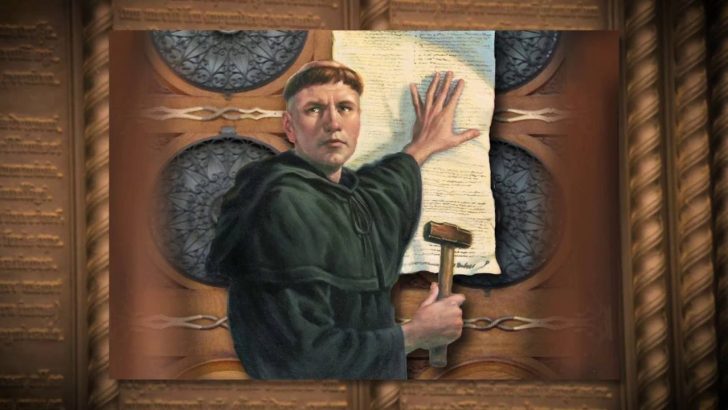Declan Marmion
Martin Luther: Catholic Dissident
by Peter Stanford (Hodder & Stoughton, £20.00)
When Martin Luther allegedly pinned his 95 theses to the door of the Castle Church in Wittenberg on October 31, 1517 he had little idea of the theological and political tumult he was about to unleash in Germany and elsewhere in Europe. Luther intended them as an invitation to a theological discussion, not to divide the Church.
In Peter Stanford’s compelling and highly readable biography of Luther, we catch a glimpse of Luther’s struggles – both within himself (e.g. his self-doubt), and with those around him including political and religious figures.
That he was driven by the call of God, or conscience, as he sometimes put it, is clear, but he wasn’t one for compromise or diplomacy.
He saw himself as God’s prophet on earth in the last days spreading God’s good news (his movement thus came to be called ‘evangelical’), as an interpreter of Scripture and a preacher. Lectern and pulpit would be the hallmarks of his public life. Though starting out as an exegete, he soon moved from a small academic audience to the broader public of the Church.
“The Church is in need of a reformation” was Luther’s rallying call. His critique of various Church teachings and practices were based on his interpretation of Scripture. Authority in matters of faith lay in the Bible alone.
His critique of indulgences was that they had become a crass exchange of money and lulled people into a false sense of security, what he termed a “works holiness”. Repentance, he maintained, cannot be bought or sold but is a lifelong activity expected of every Christian.
Luther advocated the thorough decentralisation of the Church, the abolition of the Roman Curia and a greater independence for the German Church. With the development of publishing, Luther could bring his arguments to the people directly with whom they struck a chord because he was addressing issues of real concern. In effect, he was calling on the laity to reform the Church.
Arrest
Unfortunately, as Stanford puts it, rather than treating Luther as an equal, he was treated as an irritant. Cardinal Cajetan, who was given the mandate to interrogate Luther, expected him to recant and, in the event of his refusal, intended to arrest him and bring him to Rome. The atmosphere of the time was oppositional and polemical and ultimately led to Luther’s excommunication in 1521.
Catholic excoriation of Luther persisted into the 20th Century. Luther was depicted as a monster, a child of the Devil, a drunkard, a violator of nuns, a sinner and victim of his own egoism, pride and sensuality.
It was at the Second Vatican Council that many of the ‘Reformation principles’ were officially appropriated into Catholicism. These included: an esteem for the place of Scripture in the life of the Church, the fundamental equality of all believers, and a vision of the Church as ecclesia semper reformanda.
In its Decree on Ecumenism, the Council stated that the restoration of unity was one of its “principal concerns” and that Church division is “clearly contrary to Christ’s will”. It spoke “with respect and love” for our “separated fellow Christians” who, despite the obstacles between the churches, “are in some kind of communion with the Catholic Church”. (Decree on Ecumenism, 3)
Many of the new orientations of Vatican II had antecedents in Luther: the dignity of the laity and their vocation in the Church, the universal call to holiness; the importance of Scripture (including new methods of biblical interpretation), the full participation of the whole assembly in the liturgy – now in the vernacular; and, finally, collegiality and the relation of the Pope and the Curia to the local church.
Vatican II has been described as “the end of the Counter-Reformation”. It marked the transition to a new epoch. From the beginning the Council was to be ecumenical rather than polemical and representatives of other Churches were invited to attend. Not unlike Pope Francis today, Pope John XXIII intended the Council as an invitation to spiritual renewal for the Church and the world.
Without mentioning Luther by name, the ecumenical imperative of Vatican II paved the way for subsequent projects that resulted in consensus on many of the core issues that hitherto had been divisive.
The image of Luther would become less polemically coloured and he would come to be honoured “as a witness to the Gospel, a teacher in the Faith and a herald of spiritual renewal”.
Peter Stanford’s book helps show how the positive aims of the Reformation can now be a shared concern of all Christians.
Rev. Declan Marmion SM is Professor of Systematic Theology at St. Patrick’s College, Maynooth.



